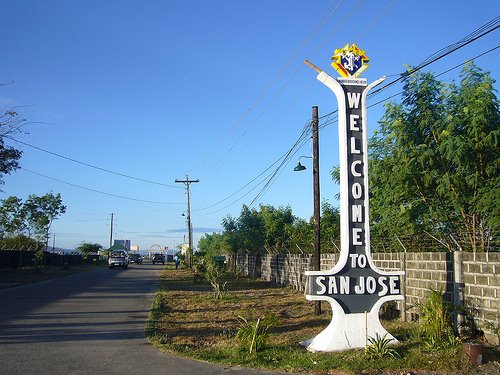“Papaano naging national
holiday ang isang selebrasyon na para lamang sa mga Katoliko?,” tanong ito ni Archbishop
Emeritus Fernando Capalla ayon sa isang panayam sa UCANews. Sinabi rin ng dating
arsobispo ng Davao na sa ganitong mga pagtatakda, napupulitika ang isang
panrelihiyong gawain. Nasaan dito ang sinasabi ng iba na may Separation of Church and the State? Pero “welcome and commendable”
naman daw ang mga deklarasyon na ganito na nagtatalaga na gawing holiday ang ilang Marian celebration. Sa katotohanan, kahit sa ibang
bansa gaya ng Mexico, Puerto Rico at iba pa ay may mga Marian national holiday
observance din.
Simula
ngayong araw ngayon ring taon, special working holiday na sa buong bansa ang
kapanganakan ng Birheng Maria o ang Feast of the Nativity of the Blessed Virgin.
Nilagdaan ng pangulo noong ika-8 ng Agosto, 2019 ang RA 11370 na nagtatakda ng
nasabing pambansang selebrasyon.
Nag-ugat
ito sa isang panukalang batas sa Mababang Kapulungan na akda ni First District
of Ilocos Norte Congressman Rodolfo Fariñas.
Ito na ang ikalawang kautusan na gawing pista opisyal ang isang araw na
pagpaparangal kay Maria. Una ay noong taong 2017, pinagtibay ang RA 10966 na si
Fariñas rin ang awtor na nagtatakda na holiday din ang Disyembre 8, Pista ng
Imaculada Concepcion. Samakatuwid, dalawang batas na ang nilalagdaan ni
Pangulong Rodrigo Duterte para opisyal na kilalanin ng estado ang kabanalan ni
Maria. Una ay ang Immaculate Conception at ito ngang Nativity of Mary.
Malakas
ang debosyon ng mga Pinoy kay Maria at sa katotohanan, naniniwala kaming mga
Katoliko na si Maria ay patronesa ng bansa. Ito rin ang paniniwala ni Congressman
Fariñas na umano ay isang Marian devotee. Pero ang ironic dito, ang mambabatas na nagtulak ng dalawang batas na ito ay inakusahan na nambubugbog ng asawa. Bagamat hindi napatunayan sa hukuman, maraming mga personalities sa showbiz at political circles na wife batter nga daw ito. Malayong-malayo ito kay Jose na kabiyak ni Maria.
Si Congressman Fariñas ay kasal sa
dating modelo at artistang si Maria (pansinin ito) Teresa Carlson ng Zambales
at ina ng walo niyang mga anak. Nagpatiwakal si Carlson noong 2004. Ang kaso ng
pagkamatay ni Carlson ay isa sa mga naging panulukang kaso o kadahilanan kung bakit
naisa-batas ang RA 9262 or the Anti-Violence Against Women and Children Act. Itinanggi
ni Fariñas na biktima ng domestic violence ang kanyang asawa. Itinaggi niya na ang kanyang pambubugbog ang dahilan ng suicide ng magandang dating komedyante sa pelikula.
Papaigting ang kagutumang dama ngayon ng mga magsasaka. Ito ay sanhi ng Rice Tariffication Law na nararanasan ngayo ng nasabing
sektor. Kagutuman sa kanayunan na parang panlipunang bulkan na maaring sumabog anumang
sandali simula ngayon. Isang socio-political situation na halos walang pinag-iba sa sitwasyon ng
pamumuno ng mapaniil na si Herodes nang ang sanggol na si Maria ay ipaglihi at isilang.
Tiyak
ko na mas magiging masaya si Maria kung sa kanyang kaarawan at nang siya ay ipaglihi ay kasabay na maaksyunan
ng gobyerno ang krisis sa bigas kaysa sa itakda na national holiday ang araw na
ito. Kapag ang pamahalaan ay nanindigan laban sa panghihimasok ng World Trade
Organization (WTO) sa bansa at kung ititigil ang deregulasyon at pribatisasyon
ng National Food Authority of NFA. Kasabay ng pagtutuon sa suportang serbisyo
sa mga magsasaka tulad ng libreng irigasyon, binhi at ilan pang mga pangunahing
pangangailangan sa pagtatanim. Kasama rin ang pagbili ng gobyerno sa inaning
palay ng mga magsasaka sa tamang presyo nang sa gayo’y maiwasan ang
pagsasamantala sa kanila ng malalaking rice traders na siyang
kumokontrol at nagtatakda sa suplay at presyo ng bigas na pinapasan ng kapwa
magsasaka at mamimili.
Ito
ang isa sa mga katulad na sitwasyong sa kanyang paglaki ay kamumulatan ng
bagong silang na si Maria. Ang sanggol na sa kanyang paglaki ay aawitin ang kanyang
Magnificat sa ganitong mga salita, “Mapadadakila
ninyo kahit ang pinakaaba, mahahango sa kahirapan kahit ang pinakadukha.
Maihahanay ninyo sila sa mga maharlika, mabibigyan ng karangalan kahit na ang
dustang-dusta.” Huwag
na nating pansinin kung totoong ito nga ang araw ng pagsilang ni Maria. Alalahanin na lang natin na ang bawat pagsilang ng tao ay dapat nagpapabago sa
mundo at sa lipunang kanyang ginagalawan. Ang bawat katungkulang ating tinatamasa ay dapat nagpapabago sa ga lumang kalakaran. Ito ang isasamo natin sa araw na ito sa banal na Ina ni Hesus. Ito ang mas makabuluhang sangkap ng ating pananalangin, pagsamba at pamamanata sa araw na ito.
Mas
magandang pa-birthday ito sa kanya ng gobyerno sa papalapit nating pagsalubong sa
ika-500 anibersaryo ng pagdatal ng Kristiyanismo sa bansa sa taong 2021 na
sakop pa rin ng termino ng kasalukuyang pangulo, kahit sabi niya hindi dapat itong ipagdiwang.
Ave Maria!
-----------

















